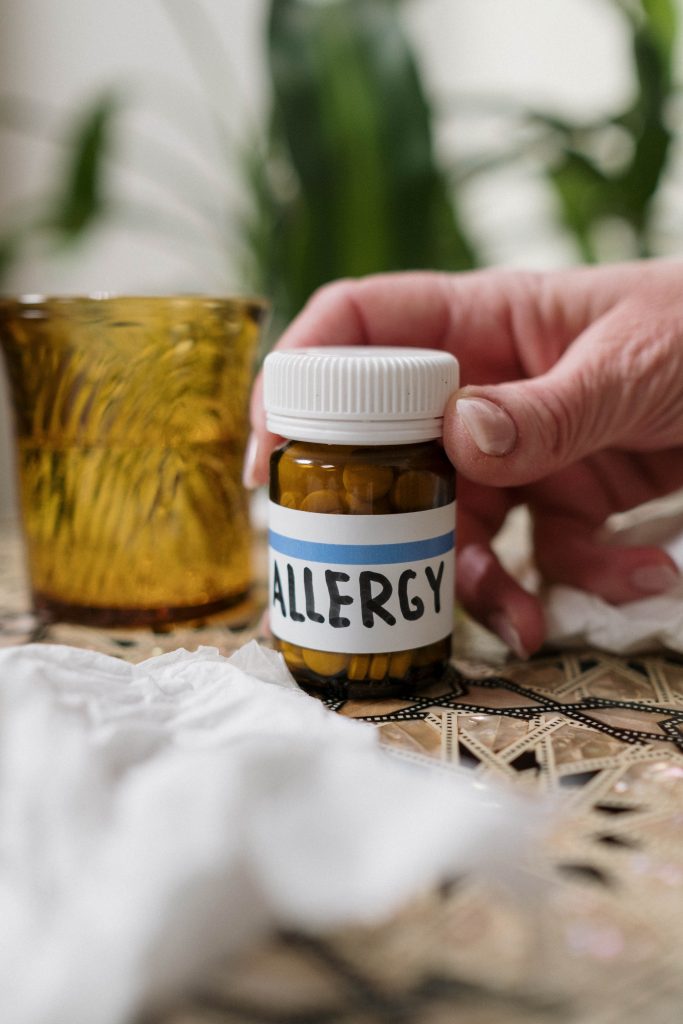

May is Allergy and Asthma Awareness Month. In this blog, we’ll review the two conditions and explore the connection between them.
It’s springtime and the trees and flowers are in full bloom. And with that comes an increase in pollen, which can wreak havoc on anyone suffering with allergies. But for some people, the same pollens that triggers an allergic reaction also causes asthma symptoms. This condition is called allergy-induced asthma or allergic asthma.
An allergy is an overreaction by your immune system to some substance that you inhaled, ate or touched – called an allergen. Allergies can cause a variety of symptoms, depending on how you encountered the allergen, but may include: runny nose, itching, sneezing, congestion, wheezing, shortness of breath, hives, swollen face or tongue, tingly mouth, and swollen throat or lips.
Your immune system responds to an allergen by producing Immunoglobulin E (IgE) antibodies. With IgE antibodies present, any subsequent exposure to the allergen results in an allergic reaction. And when that occurs, your immune system produces histamines, chemicals that expel the allergen from the body and cause the familiar allergy symptoms such as runny nose, sneezing and itching.
Asthma involves inflammation and swelling of the bronchial tubes that carry air to the lungs. In addition, the cells that line the airway in people with asthma produce more mucus, which is thicker than normal, making breathing more difficult. Common symptoms of asthma include: persistent cough, shortness of breath, wheezing and chest tightness, pain or pressure.
It’s estimated that more than 25 million people in the US have asthma, and allergic asthma is the most common type, affecting approximately 60 percent of all people with asthma. With allergic asthma, the same allergens that cause your allergies cause your asthma symptoms. These include pollen, dust mites, pet dander, mold spores and certain foods.
Exactly how the allergic reaction leads to the development of allergic asthma is still being studied. It’s currently believed that IgE and the histamines initiate an inflammatory response in the body, and high levels of these substances, which are present during an allergic reaction, contribute to the inflammation and swelling of the bronchial tubes, triggering asthma symptoms.
Diagnosing allergic asthma generally begins with determining what allergens cause your allergic reactions. A skin prick test is the common way to check for allergies. During this test, your doctor places a small amount of an allergen just under your skin and waits to see if red bumps develop. The red bumps indicate an allergic reaction.
Other tests may be used to diagnose asthma. They include spirometry, which measures the amount of air you inhale and exhale; peak flow test, which measures air pressure as you breathe out; and lung function test, which can show if your breathing improves after you take a certain medication. If your breathing improves, it’s likely you have asthma.
The treatment for allergic asthma can involve treating the allergies, asthma or both. Treating allergies generally includes using antihistamines to deal with the runny nose, sneezing and itching. In more severe cases, immunotherapy may be recommended. Immunotherapy involves getting repeated shots of small amounts of an allergen to build up your tolerance to it.
Asthma is typically treated with inhaled or oral anti-inflammatory medications that help block the allergic response. You may be prescribed a fast-acting inhaler to treat symptoms when they occur or a daily-use inhaler for mild, persistent symptoms. If your asthma symptoms are more severe, your doctor may prescribe an oral medication to use with your inhalers.
There are a few treatments that help with both conditions. One is called a leukotriene modifier, and an example is Montelukast. A daily pill, Montelukast can ease both allergy and asthma symptoms by helping to control immune system chemicals released during an allergic reaction.
Anti-IgE therapy is another treatment that helps with both allergies and asthma. With this therapy, a medication called omalizumab is used. Omalizumab interferes with the function of IgE in the body, helping to prevent the allergic reaction that triggers asthma symptoms.
The most important step you can take to combat allergic asthma symptoms is to avoid the allergens that trigger allergic reactions. Here are a few tips from the American College of Allergy, Asthma and Immunology:
• If pollen is your problem, keep windows closed and avoid going outside when pollen counts are high.
• To reduce mold, use bathroom fans and clean up any standing water immediately. Scrub any visible mold from surfaces with soap and water, and dry completely.
• Ward off dust mites and mold by keeping the humidity in your home below 50 percent and cleaning gutters regularly, Do not use vaporizers or humidifiers.
• Remove pet allergens by vacuuming frequently and cleaning upholstery, including washing your pet’s bed, Keep your pet out of your bedroom to limit symptoms at night.





Leave a Reply